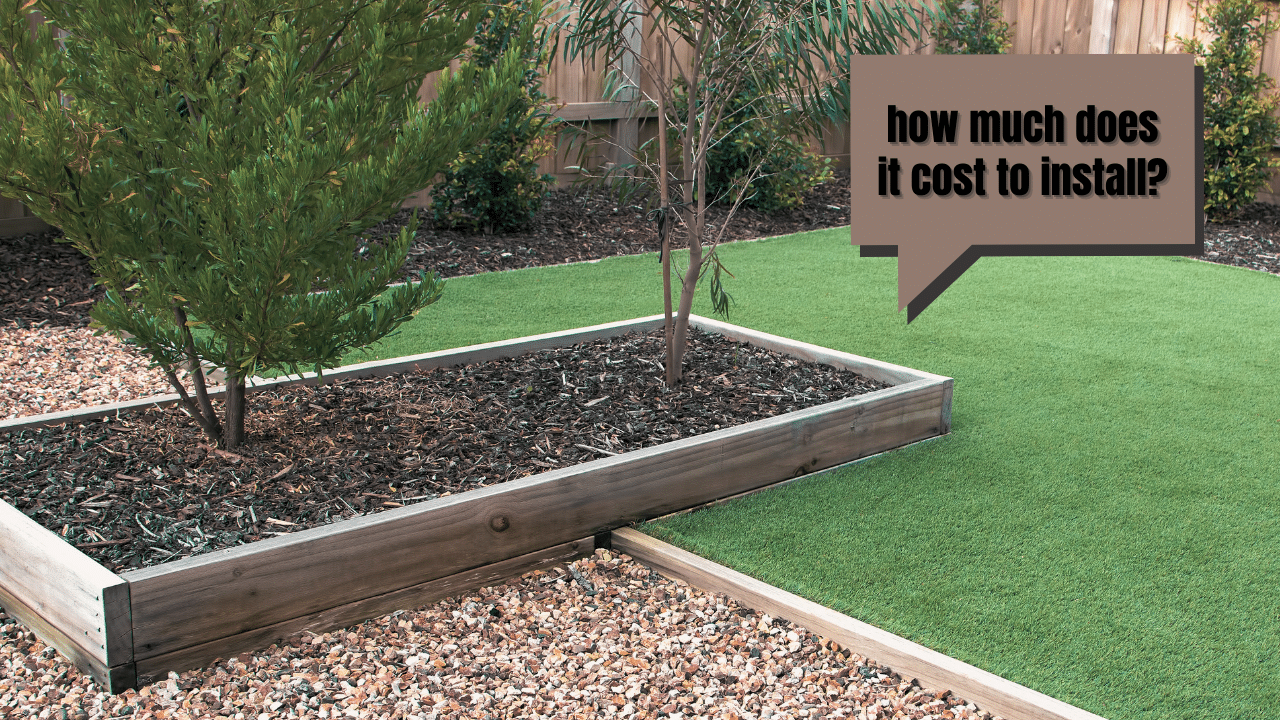Nowadays, fake grass continues to soar in popularity for picture-perfect lawns and yards. The trend of synthetic grass use for landscaping grows up to 15% per year in the United States.
Aside from its visual appeal, it also eliminates the tiresome chore of fertilizing, watering, and weeding your grass beds.
If you’re thinking about making the switch from natural grass (Related: 6 Best Types of Florida Grass And Expert Maintenance Tips) to its synthetic counterpart– let’s discuss the average costs of installing one at home and everything you need to know about it.
Artificial Grass Average Cost

Installing artificial grass starts from $12.5 per sq/ft. A broader range would be between $6 and $19 per sq/ft. This covers both the material costs as well as local labor rates.
Total project costs will heavily depend on your chosen brand, the size of your yard (or any area you wish to have artificial grass beds), and its particular material type.
Suppose you have a 500 sq ft lawn. In that case, artificial grass installation will cost you around $6,500 on average. After installation, it’s virtually maintenance-free for the next 15 - 25 years.
In contrast, professionally laid sods have cheaper upfront costs (at 15 to 61 cents per sq/ft), but you will need to shell out on regular maintenance expenditures.
Beyond yard beautification purposes, more homeowners in the US are opting for fakes to use in:
Artificial Grass Cost by Type
There are three common synthetic turf types: Polypropylene, Polyethylene, and Nylon. These are colored accordingly to mimic the look of various grass species.
You can count on each artificial grass material to vary in quality and price. Naturally, high-quality artificial grass beds will cost you more. Cheaper ones are often of low-quality material.
Polypropylene
Polypropylene is considered the least durable artificial grass type out of the 3. If your shower deals with heavy foot traffic daily along with high temperatures– their appearance may be compromised.
It starts somewhere between $2 and $7 per sq/ft when it comes to its price. Most homeowners choose Polypropylene for indoor areas (with adequate shade).
Pros:
Cons:
Polyethylene
Polyethylene material gives you an artificial grass lawn that mimics the real thing. It boasts a more natural appearance and a softer texture than nylon and Polypropylene. Not to mention, it can handle foot traffic and heat better than its polypropylene counterpart.
This material starts from $2.6 to $4 per sq/ft. If you’re a proud fur parent– this grass type proves to be an excellent choice as it has good drainage and is non-absorbent.
Pros:
Cons:
Nylon
Homeowners who prioritize durability can benefit the most from artificial grass made of nylon. The price starts at $6 to $8 per sq/ft.
Since the material is renowned for its durability, you can count on it to handle heavy foot traffic and exposure to hot temperatures without getting compromised in the slightest.
Regardless, this durability is also why nylon artificial grass is rather stiff. If you want a softer texture, you may want to select polyethylene instead.
Pros:
Cons:
Factors Affecting the Cost of Artificial Grass Installation
Aside from your preferred material type, other influential factors may affect the total project costs. This includes the artificial grass’ blade shape, brand, and total area size.
Let’s take a closer look at these details below.
Brand
Several manufacturers sell high-quality artificial grass but note that this comes at a cost.
If you’re looking for affordable brand options, this usually is made of low-quality artificial grass. That said, it’s best to manage your expectations.
Blade Shape
You may also choose from different artificial grass blade shapes. This determines its natural appearance, durability, and heat resistance.
Specific blade shapes are more durable and resistant to heat, among others– but it may cost you more.
Area Size and Shape
Installing artificial grass for an area with extensive square footage will have you paying more than what you’d typically pay for smaller sizes.
For an area with an average of 500 sq/ft, expect to pay around $6,500 for the installation costs. The total price will only double for a 1,000 sq/ft area.
Another factor to consider is the shape of the said area. If you’re installing artificial grass in curved areas– the installation process may be more difficult. Since it takes more labor, the costs will also increase accordingly.
There are many cases where professional installers need to work around your existing landscape to ensure proper turf placement. Costs will also increase if they trim or reshape the artificial grass.
What are the Benefits of Artificial Grass?

Here’s what we love about artificial grass.
What are the Drawbacks of Artificial Grass?
Like everything else, artificial grass also has its share of drawbacks. Let's discuss them in detail.
Frequently Asked Questions (FAQs)
What maintenance is required for my fake grass?
Some maintenance is required to keep your fake grass performing at its best, such as spraying your turf from time to time and cleaning the spills/pet feces right away. Perform turf brushing every few months to avoid it from dripping and flattening because of heavy foot traffic.
What is artificial grass made of?
Fake grass is composed of filaments threaded into a back to let water through. The backing is set on a layer of drainage, compacted gravel, and secured along the perimeter. Then, it is filled with sand or recycled crumb rubbers to prevent it from blowing away.
Can synthetic grass be stained?
If accidents occur, do not worry because spills from oil or paint do not stay permanently on synthetic grass. Ideally, clean up the spills immediately by spraying and rinsing them off to keep them looking at their best.
